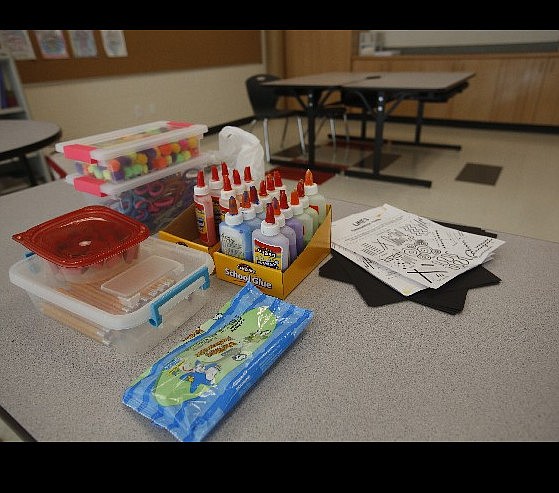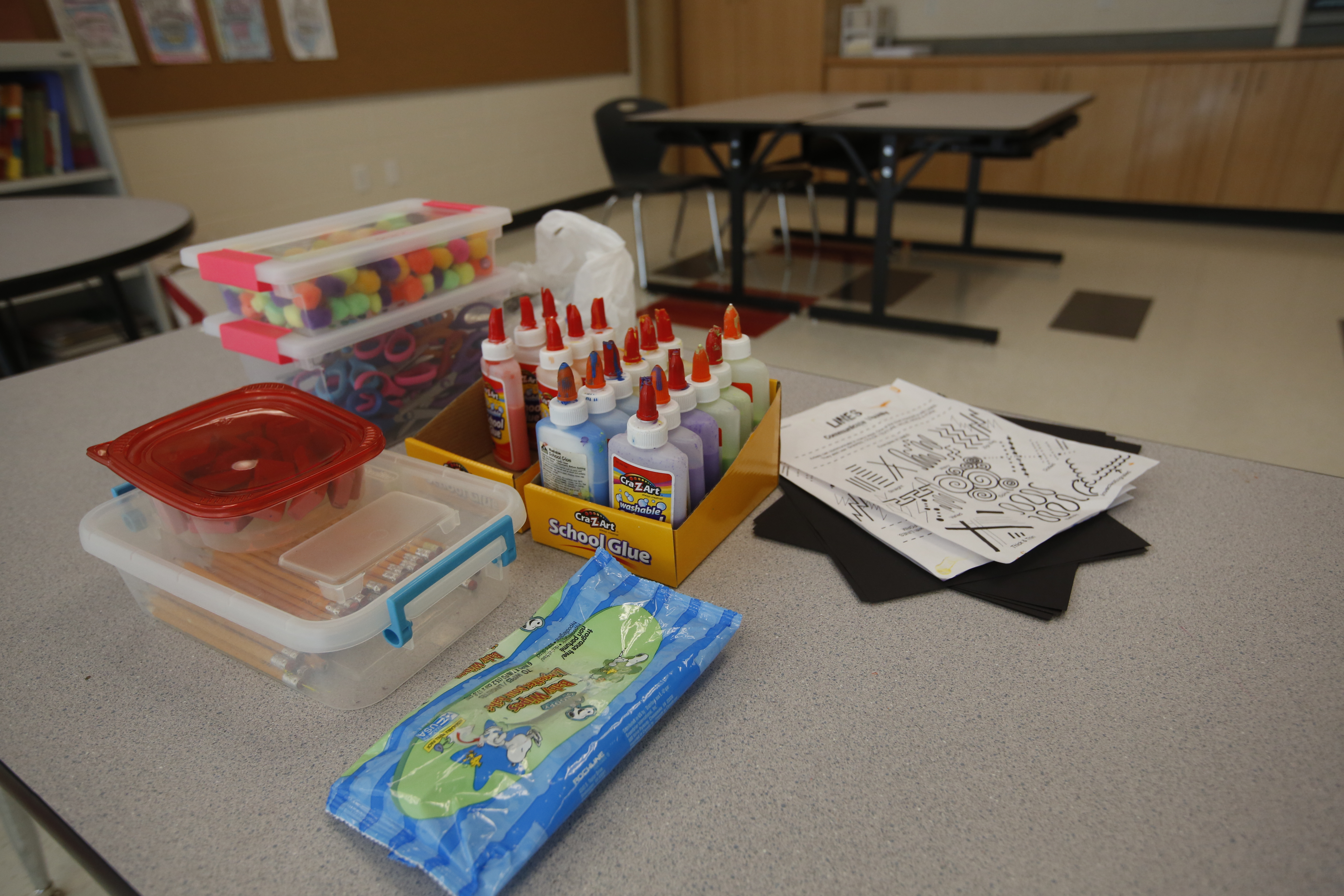The $21-million Ooltewah Elementary School, which opened last year, has an empty art classroom and an unused science lab because the Hamilton County Department of Education hasn't employed elementary school art teachers for years. And the school doesn't have money for a full-time science teacher, either.
"It's empty," said Miranda Perez, whose 9-year-old son attends Ooltewah Elementary. "It's such a waste of our tax dollars."
But Perez plans to do something to about it.
She has launched the Ooltewah Harrison Education Foundation, nicknamed D9 for its location in school board District 9.
The group has about 30 members. But a membership drive is underway, and Perez hopes the foundation will grow to be a 500-member organization that raises about $200,000 annually to hire art and science teachers at Ooltewah Elementary and fill other needs at four additional elementary schools: Harrison, Snow Hill, Wallace A. Smith and Wolftever Creek.
The group's first big fundraiser, a 5K race and run, is scheduled for Nov. 15.
"Either I could be a mom that complains, or I could be a mom that makes a difference," Perez said.
D9 joins the ranks of a growing number of education foundations in Tennessee and hundreds more nationwide that are raising money so that public schools can have more resources. Nationwide, such foundations gave nearly $200 million to public schools last year. The foundations hold fundraisers and seek donations and grants to hire teachers and fill other "gaps" in the dwindling list of programs offered by cash-strapped school districts.
Foundation organizers don't like asking donors to pony up money, but they say that's the only way students' needs can be met these days. Some 30 states -- including Tennessee, Georgia and Alabama -- still spend less per pupil than before the Great Recession, a recent federal report found. Tennessee's per pupil spending is down by 0.8 percent, the report from the Center on Budget and Policy Priorities found, while Georgia's spending is 11 percent less than pre-recession and Alabama is down 17.8 percent. Alabama is second only to Oklahoma in cutting education spending.
"It's a growing trend across the country," said Mike Taylor, who since 2008 has been executive director of the Mountain Education Foundation, which raises about $500,000 annually to support Signal Mountain's two elementary schools and a combined middle and high school.
He'll move on in November to head up a larger education foundation in Richmond, Va.
"There's just over 100 ed foundations in Tennessee," said Taylor, who said he has seen the number double in the past six years. "Most of us are dealing with the same types of issues. Our tax dollars should cover these things. But unfortunately, they don't."
Hamilton County has six education foundations, Taylor said. The Public Education Foundation works with schools throughout the county. Other foundations here focus on local schools: The Mountain Education Foundation and foundations that serve Normal Park, East Ridge, the Chattanooga School for the Liberal Arts and now, D9.
Funding from the Mountain Education Foundation helps pay the salaries of 11 full- and part-time teachers, including art teachers at Nolan and Thrasher elementary schools and a college counselor at Signal Mountain Middle-High School. The organization recently raised $175,000 at a coffee and dessert event that featured a talk by June Scobee Rodgers, whose husband died in 1986 while commanding the space shuttle Challenger.
"[We raised] $175,000 in one night -- we sure did," Taylor said.
Perez said she was inspired by the Mountain Education Foundation, and it led her to aim high in her fundraising goals. She hopes to raise $45,000 for each of the D9 foundation's five elementary schools.
"My goal is really outrageous, to be quite honest," Perez said. "We've been applying for grants."
Instead of fundraisers, D9 plans to raise money at events that become community "traditions," Perez said.
"D9 wants our moments to be more than events to raise money," she said in a news release. "D9 represents opportunities for families to create fun and fond memories that carry over from year to year, while supporting a much-needed cause."
People also leave money in their wills to education foundations, according to Nancy M. Dye, executive director of the Chicago-based American Schools Foundation Alliance, which represents about 260 educational f0undations in 44 states. The alliance calculated last year that its member foundations together gave $179 million to schools.
Business donations also figure prominently, she said, because local businesses have a vested interest in good schools.
"Businesses are very generous," Dye said. "It's not just the parents."
Some say local education foundations work only for schools in well-to-do areas, because residents and businesses there can afford to donate, unlike in low-income areas.
That is mitigated, according to Taylor, by such factors as Title I, a federal program that provides extra funds for schools with low-income students, and by the work of the Public Education Foundation in downtown Chattanooga which, with 13 full-time employees and an annual budget of $5 million to $6 million, is Hamilton County's largest education foundation.
"We do have some programs that are focused more on urban schools," said Christa Payne, vice president for external affairs for the Public Education Foundation. For example, PEF helps administer Project Inspire, a program that puts science and math teachers into low-performing Hamilton County public schools.
The Public Education Foundation also works district-wide and countywide to help teachers and school administrators hone their skills through such efforts as a Principal Leadership Academy.
"We're really focused on professional development," Payne said.
Hamilton County Schools Superintendent Rick Smith said the district cut funding for elementary school art teachers about a decade ago.
Smith supports the idea of art and music instruction in elementary schools, because he said the classes create well-rounded students and have been shown to improve academic performance.
But Hamilton County doesn't have the money to bring art class back to elementary schools, he said. School officials have had other priorities, Smith said, such as establishing a high school that focuses on STEM, or science, technology, engineering and math.
"You're looking at a little bit over $2 million," Smith said. "If I had the money, I'd already have the [art] program."
Contact staff writer Tim Omarzu at tomarzu@timesfreepress.com or www.facebook.com/tim.omarzu or twitter.com/TimOmarzu or 423-757-6651.


